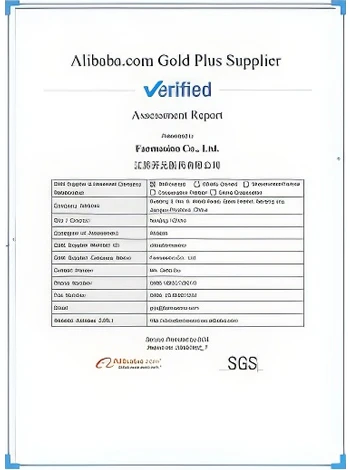



lead 11 oxide
The Significance of Lead(II) Oxide in Industry and Research
Lead(II) oxide, with the chemical formula PbO, is a well-known compound that has garnered significant attention in various fields of industry and research. As a versatile inorganic substance, it plays a crucial role in applications ranging from glass manufacturing to battery production. This article explores the properties, applications, and safety considerations associated with lead(II) oxide.
Properties of Lead(II) Oxide
Lead(II) oxide appears as a yellow to red powder, particularly in its litharge form, which is a yellow color, while its red oxide form is called minium or red lead oxide. The compound has a high melting point of 888 °C (1630 °F) and is relatively stable under normal conditions. It exhibits amphoteric behavior, meaning it can react with both acids and bases to form various lead salts. This characteristic makes lead(II) oxide a valuable intermediary in the synthesis of other lead compounds.
One of the most notable aspects of lead(II) oxide is its ability to absorb and transmit light. This property makes it a valuable component in the ceramics and glass industries, where it is used to produce high-index glass and improve the luminosity of certain products.
Applications in Industry
Lead(II) oxide is primarily utilized in the production of lead-acid batteries, which are widely employed in automobiles, uninterruptible power supplies, and stationary applications. In such batteries, lead(II) oxide serves as one of the active materials in the positive electrode. The efficiency and reliability of these batteries are crucial in many sectors, making lead(II) oxide indispensable in the renewable energy storage and electric vehicle markets.
Moreover, lead(II) oxide is prominently used in the glass and ceramic industries. It enhances the optical properties of glass, contributing to its brightness and smooth finish. Lead-glass, also known as crystal glass, contains lead(II) oxide, which increases its refractive index and brilliance, making it desirable for high-quality glassware and decorative items.
In the field of pigments, lead(II) oxide is used to manufacture red lead oxide, an important pigment for paints and coatings, particularly in corrosion-resistant applications. While the use of lead-based pigments has declined due to health and environmental concerns, the significance of lead(II) oxide in specific industries persists.
lead 11 oxide

Research and Development
Research into lead(II) oxide extends beyond traditional applications. Scientists are exploring its potential in nanotechnology, where it is being investigated for use in photonic devices and semiconductor applications. The compound's unique properties lend themselves to innovative explorations in materials science, paving the way for advancements in electronic devices and energy solutions.
Additionally, the role of lead(II) oxide in environmental science is gaining attention. Studies aim to understand its environmental impact, particularly concerning lead contamination and mitigation strategies. Researchers are investigating methods to safely recycle lead(II) oxide from used batteries to prevent environmental degradation and promote sustainability.
Safety Considerations
Despite its numerous applications, lead(II) oxide poses health risks, primarily due to lead's toxic nature. Exposure to lead can result in serious health issues, including neurological damage and other systemic effects. Therefore, strict regulations govern the handling and disposal of lead-containing materials.
Industries that utilize lead(II) oxide must adhere to safety protocols to minimize exposure risks. This includes wearing appropriate protective equipment, implementing engineering controls, and ensuring proper ventilation in workplaces. Additionally, ongoing education about the dangers of lead exposure is vital for individuals working with this compound.
Conclusion
In conclusion, lead(II) oxide plays a vital role in various industrial applications and research areas. While its advantages are clear, the health and environmental concerns associated with lead demand responsible management. As research continues to explore new applications and safer practices, lead(II) oxide remains an important compound with significant implications across multiple sectors.
-
Why Sodium Persulfate Is Everywhere NowNewsJul.07,2025
-
Why Polyacrylamide Is in High DemandNewsJul.07,2025
-
Understanding Paint Chemicals and Their ApplicationsNewsJul.07,2025
-
Smart Use Of Mining ChemicalsNewsJul.07,2025
-
Practical Uses of Potassium MonopersulfateNewsJul.07,2025
-
Agrochemicals In Real FarmingNewsJul.07,2025
-
Sodium Chlorite Hot UsesNewsJul.01,2025










